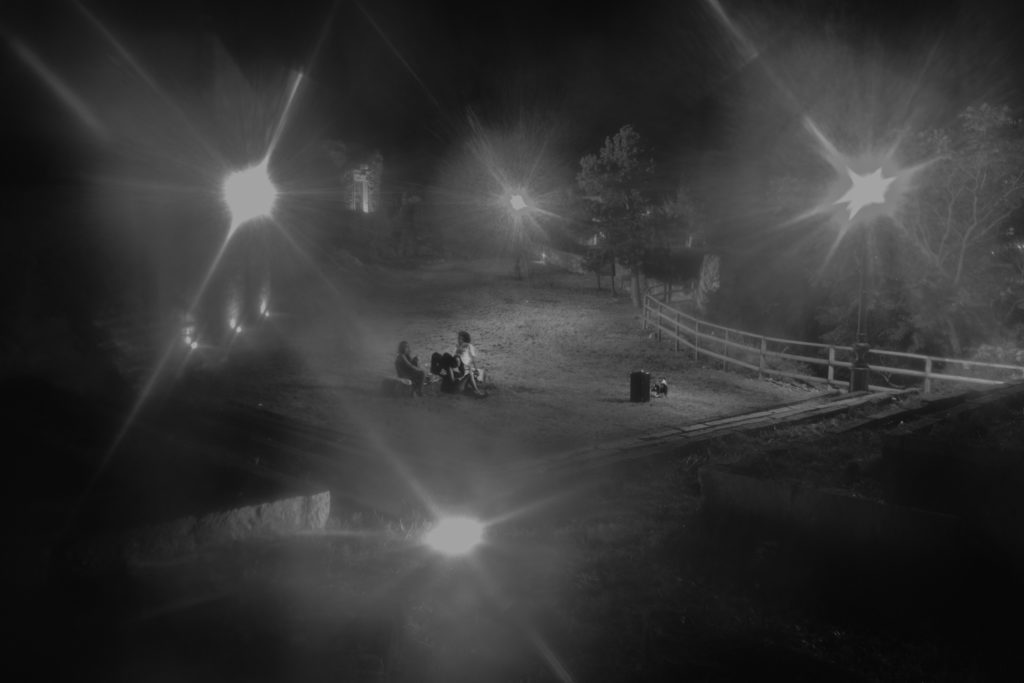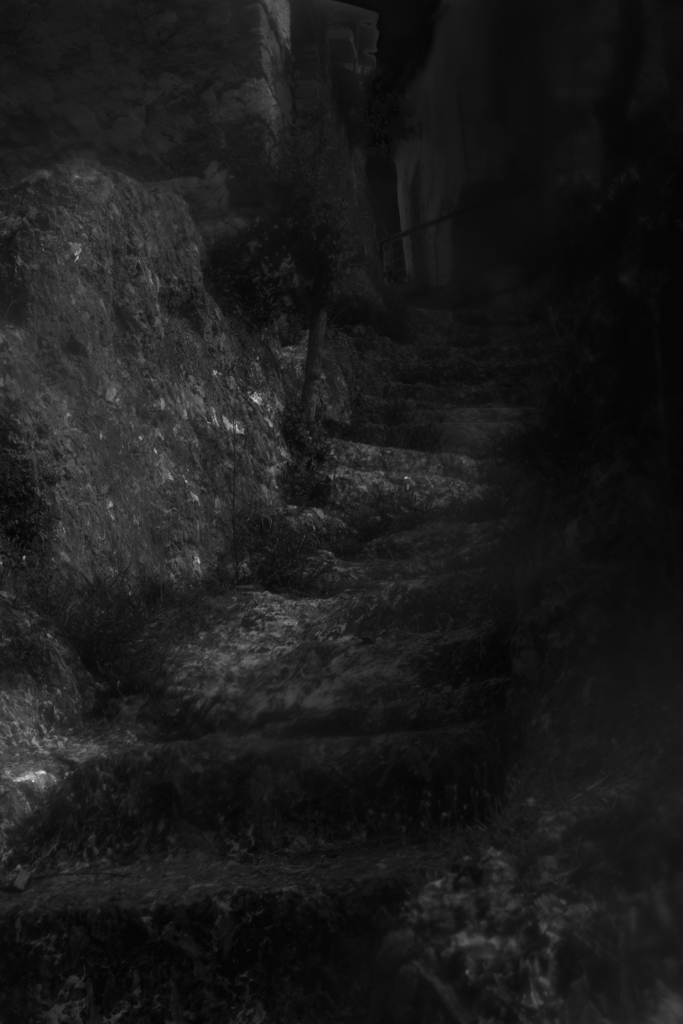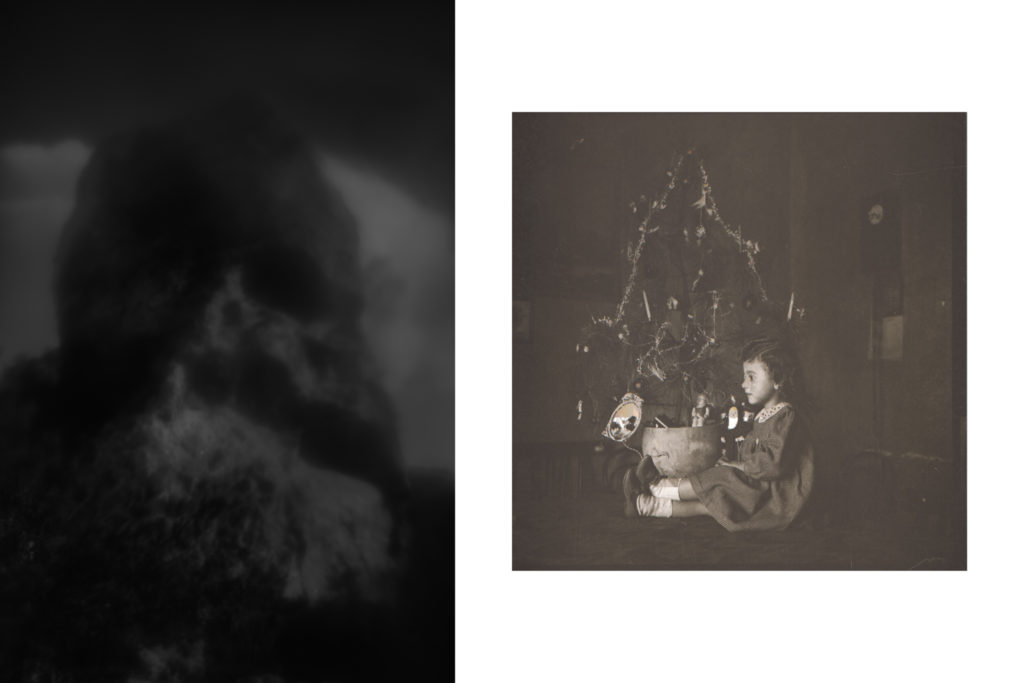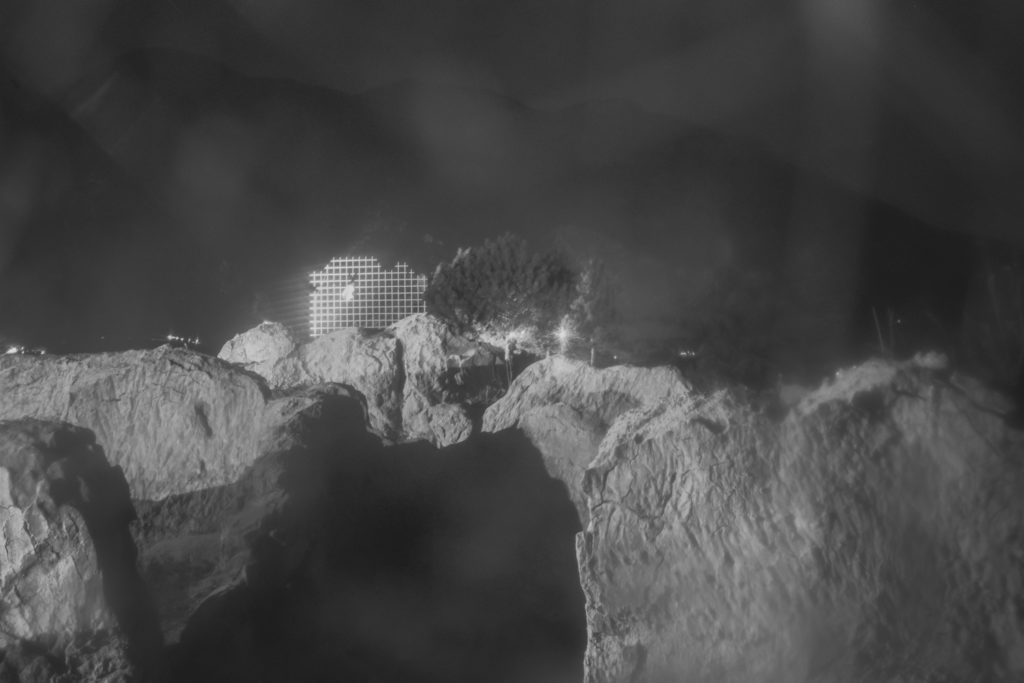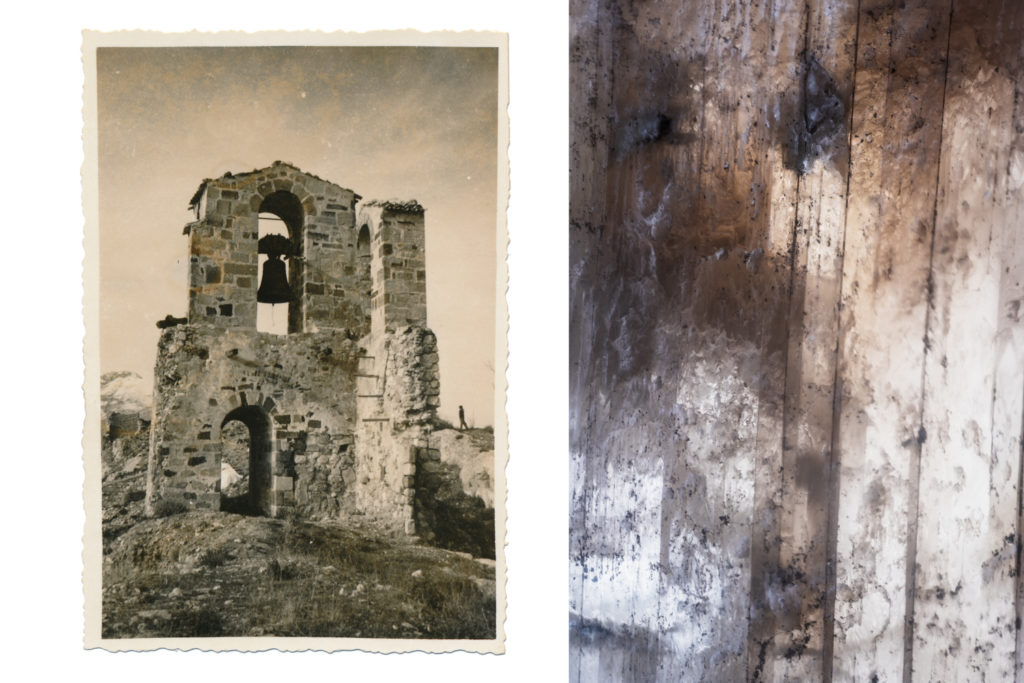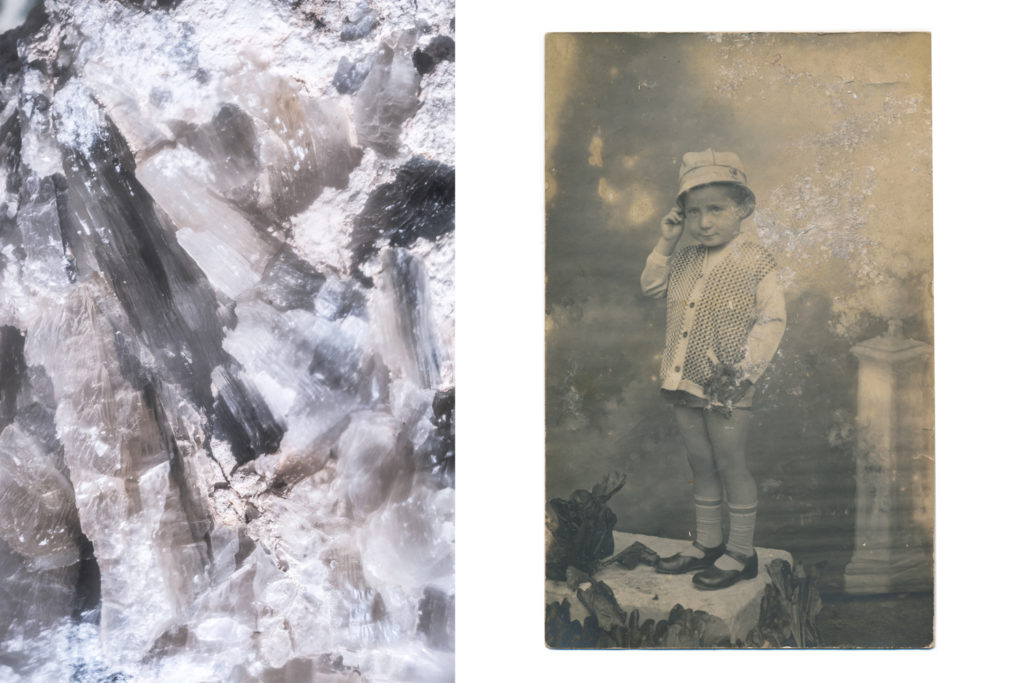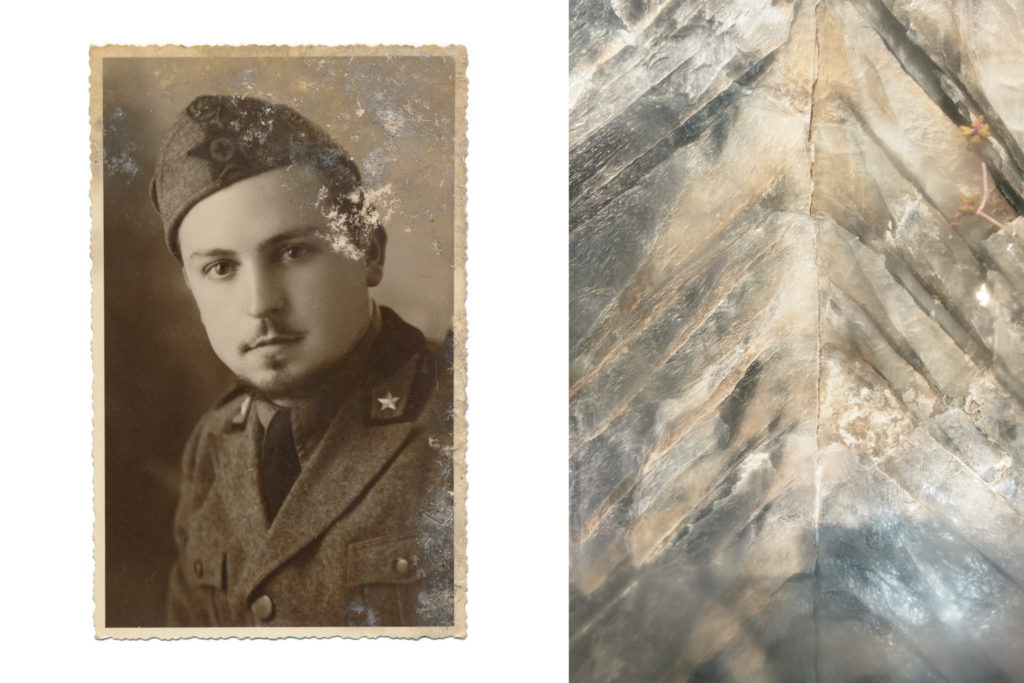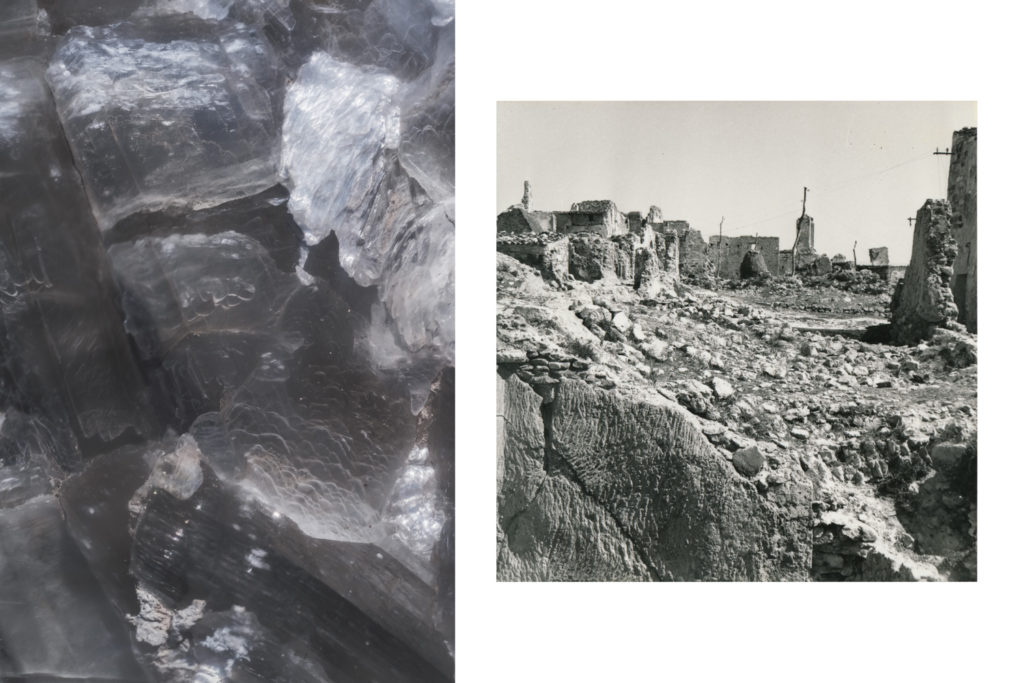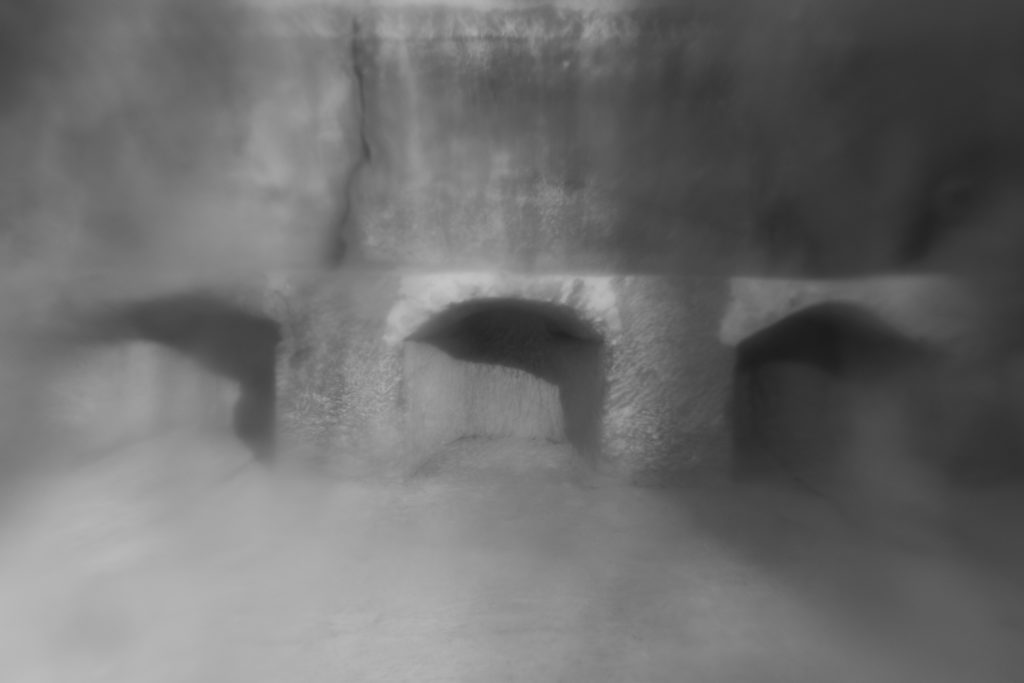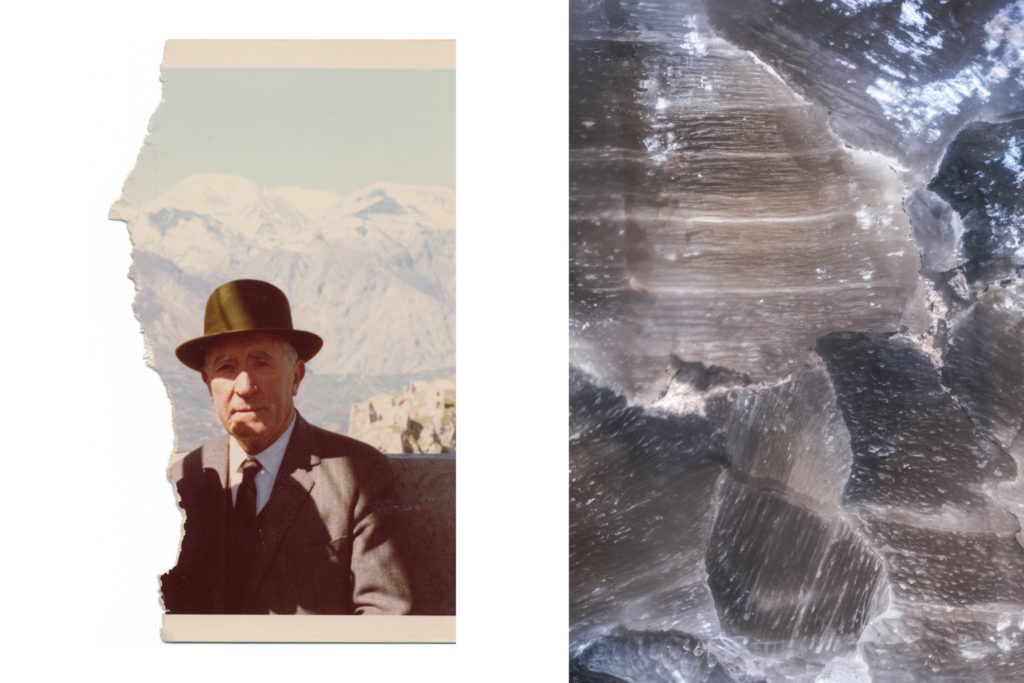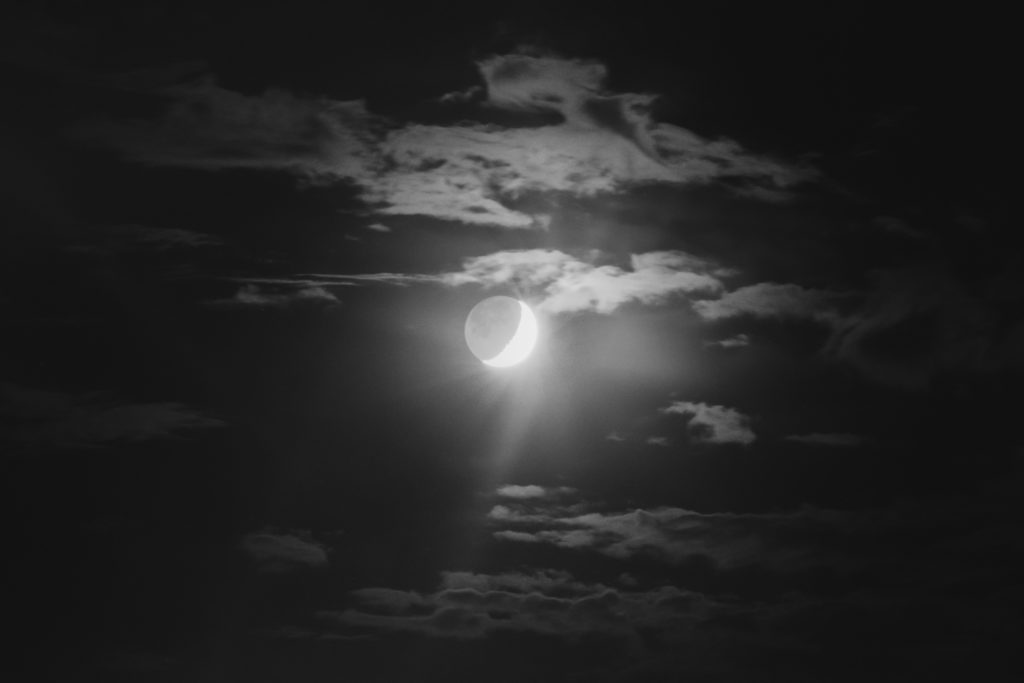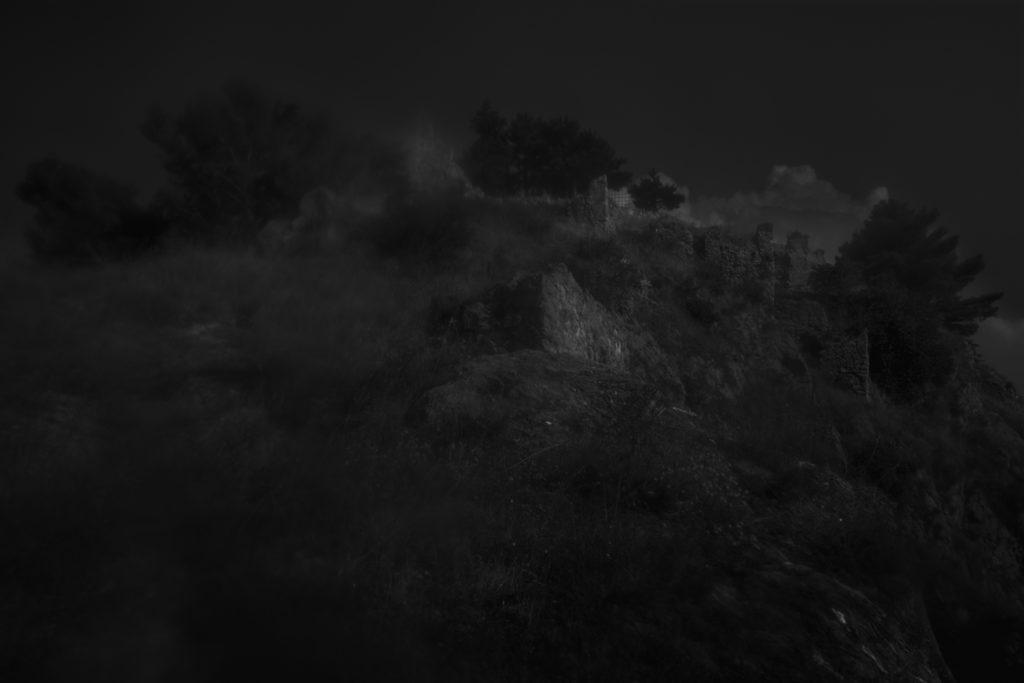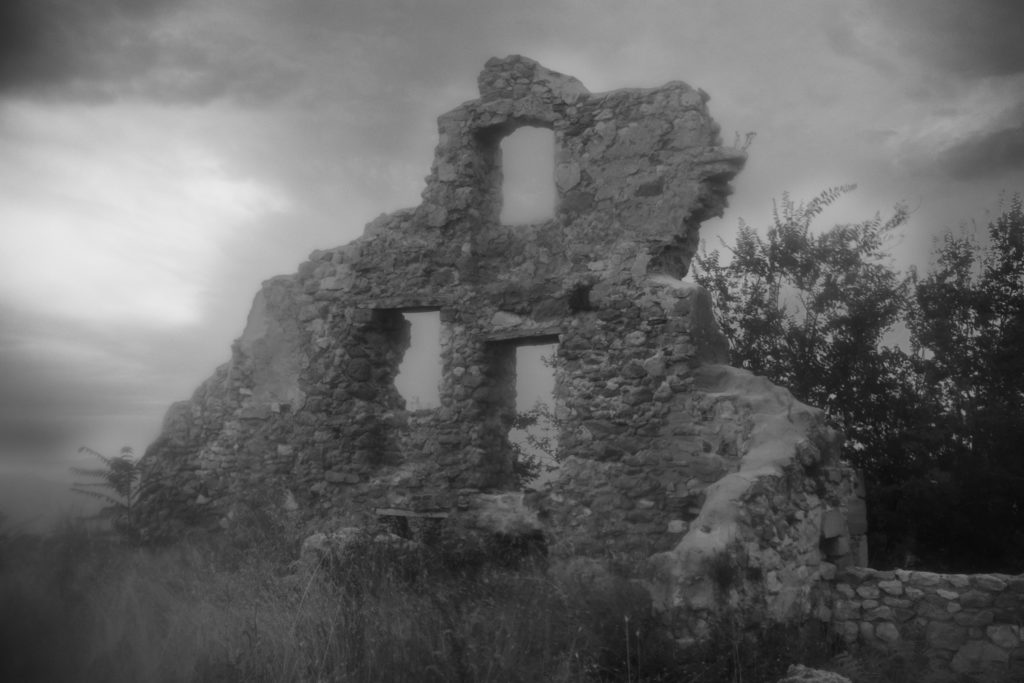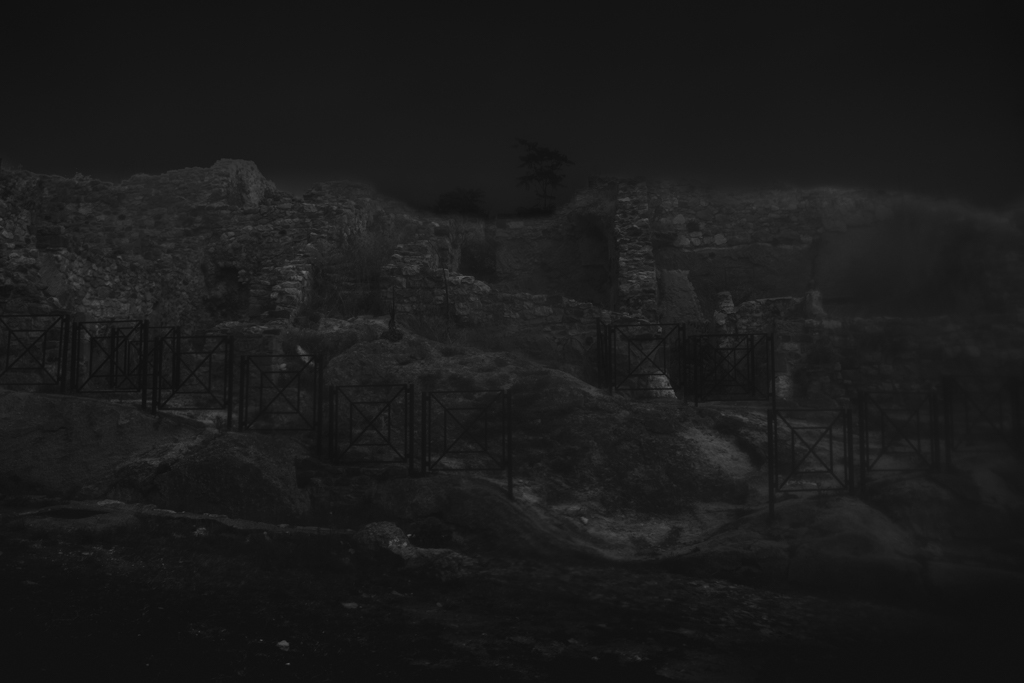Selenite – The Stone of the Moon
(2018)
In Selenite I have assembled a filter made of crystalline gypsum (selenite) and have utilized it to shed new light on the vestiges and the war-torn history of the old-town of Gessopalena (Italy), whose habitations are dug into the same gypsum rock.
Razed to the ground in 1943 by the WWII when the Gustav Line ran across it, Gessopalena is also my hometown and a place from which I moved away. Like personal relationships, gypsum shows translucency and opacity. As such, and forever fixed in the geology of our common place of origin, it remains an allegory of the collective traumatic memory of a population torn by the war, and its journey of healing and recovery from the horrors of Fascism. I have combined the resulting body of work with my family archive. I juxtaposed the archive photos to the diverse gypsum crystals of the town. In so doing, I tried to put everything together into some kind of cohesive entity.
After the armed conflict ended, the survived population tried to find new shelter in the destroyed village, as this was central to their history and identity. They eventually rebuilt a modern borough nearby, and the old-town became a ghost village. Therefore, the present body of work serves also as a meditation on the relationship between the local cultural identity, the city of today, and its history of urbanisation.
It is a geological feature of the territory to inspire the photographic process. Known in the Ancient Rome as Terrae Gypsi, the town stands on a gypsum outcrop. Its Latin motto ‘E Proprio Lapide’ translates in ‘out of its own stone’. With the visuals made through the local gypsum, I intend to bear witness to the lost way of life of the town. Literally taken from the territory being shown, I want the medium to speak about our common place of origin. The gypsum stone found there exhibits so obvious crystalline structure that the town was also known as Preta Lucente, or Shining Stone.

